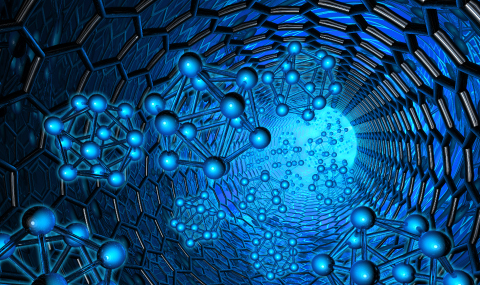Quantum Hall Effect is a striking new phenomenondiscovered some 15 years ago. It occursin artificially prepared conductors in which electrons canmove only in a plane. When put in a strong magnetic field the electroncurrent flows perpedicular to applied voltage and the voltage tocurrent ratio is to an incredible accuracy equal to an integer number of units of quantum resistance.
In verypure samples this ratio can also be equal to a fraction with odddenominator, like 1/3, 1/5, 2/7 etc. Such an effect is called a FractionalQuantum Hall Effect (FQHE). It turns out that edges of a sample playa special role in such effect. There existsa peculiar type of waves which can propagateonly along the edges. These waves move in opposite directions onoppositely lying edges.
With my students I have investigated the processin which such waves can interact and "drag" each each other in theirown direction. Because of this interaction onecan excite such waves by sending an alternatingcurrent through the sample.


